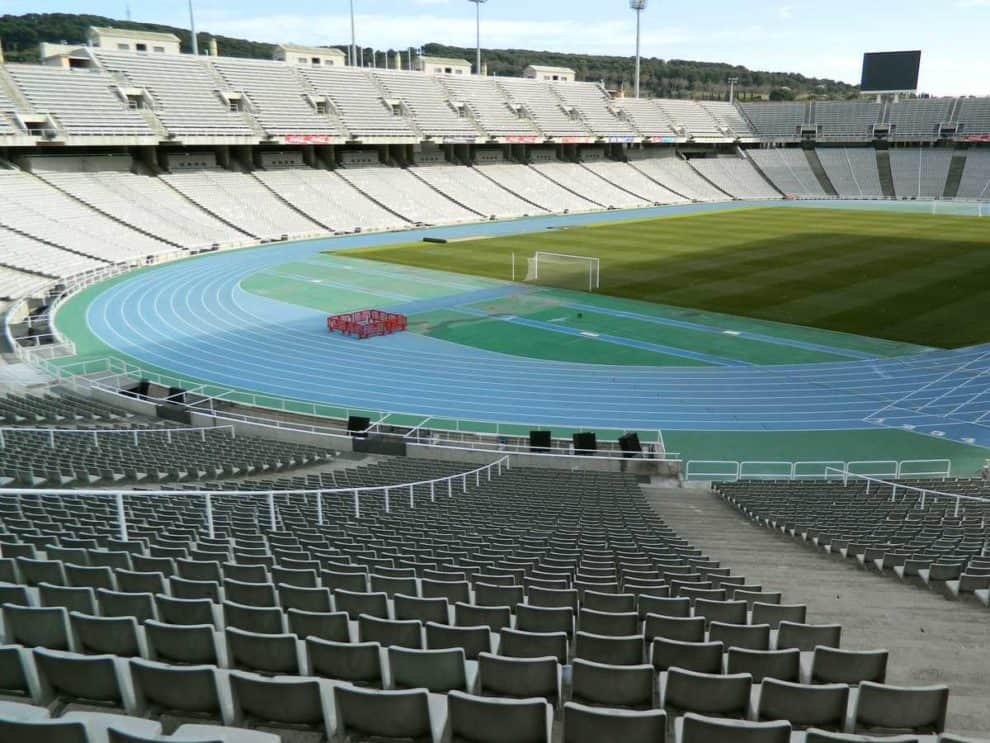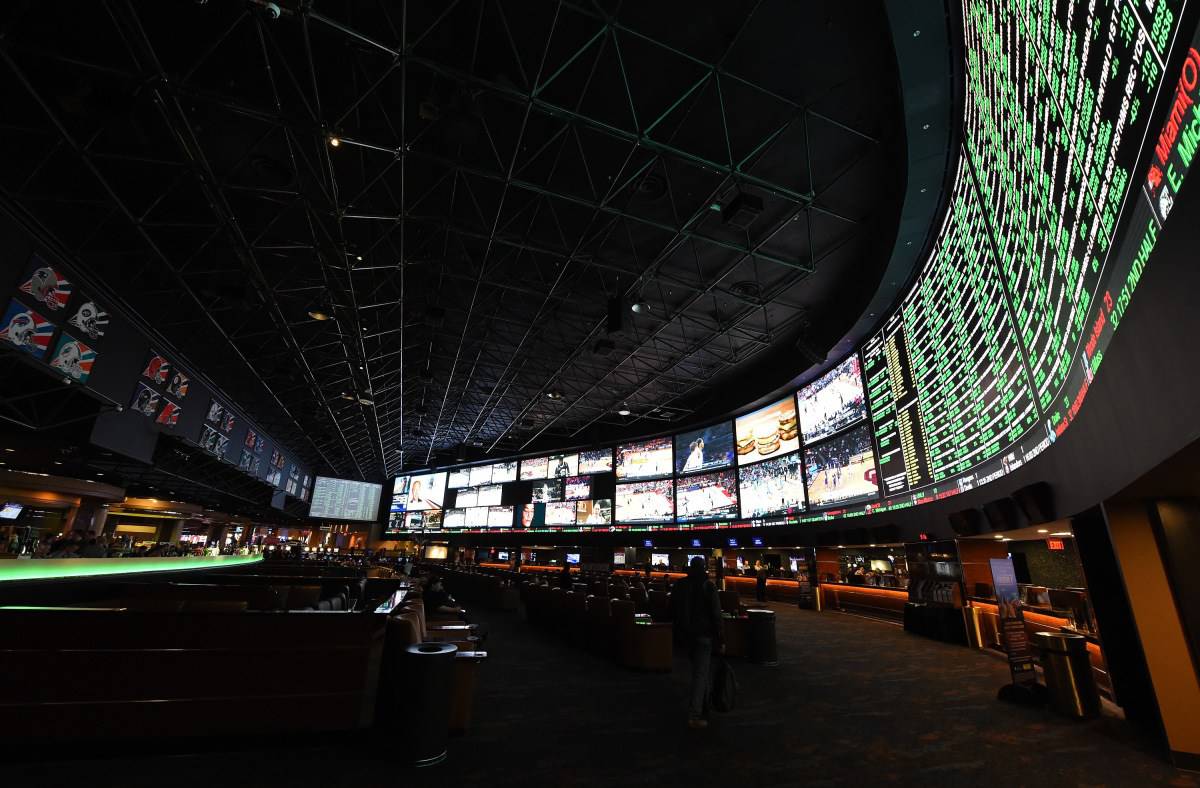
- Spanish La Liga side Barcelona will play home games at the Olympic Stadium during the 2023-2024 season due to remodling work at their Camp Nou home stadium.
- Work will begin in June on a €1.5 billion project to bring the aging 99,354 seat stadium and surrounding area up to modern standards.
- Olympic Stadium was built for the 1929 International Exposition and was rennovated to be the main stadium for the 1992 Summer Olympics. It has a capacity of 60,713.
Spanish La Liga mainstays FC Barcelona will be leaving their venerable Camp Nou home stadium–at least temporarily. The team has announced that work will begin in June on a €1.5 billion project to bring the aging 99,354 seat stadium and surrounding area up to modern standards. As a result, Barca will be forced to play the 2023-2024 stadium 15 minutes away at Olympic Stadium.
The move to Olympic Stadium was deemed preferable to the other most viable option, playing the 2023-2024 season at 50% capacity. Here’s an overview of what will change from a statement relased by Barcelona on the team’s official website:
The work will focus on the first and second tier, technological aspects, the environs of the stadium, and exterior urbanisation.
Actions inside the Camp Nou will include the demolition of the additional structure in the South Goal zone where the Medical Centre was located, restoration work, anti-carbonation and waterproofing of the stands, as well as structural finishes and the improvement and renovation of retransmission systems.
In terms of technology, the plan is to install new telecommunications connections, to relocate the data processing centre, to create a technical room for monitoring internal telecommunications infrastructures and to install the new facilities for the TV Compound, for parking of mobile TV units.
The part of the plan that will disrupt Barcelona’s home games will take place in Summer 2023 as the third tier is demolished. There is some concern to the timeline due to ongoing supply chain issues, as well as the war in Ukraine. Once again, a statement from the team explains the process (translated from Spanish):
As President Joan Laporta said a few weeks ago, given the uncertainties generated by the war in Ukraine, especially with regard to the cost and availability of materials, a precautionary principle is to be observed in order to minimise risks and protect next season’s revenue, but with the least possible impact on the works schedule. The demolition of the third tier will therefore go ahead in the summer of 2023, which will win time given the current uncertainty of prices, and will ensure that the Camp Nou can operate at virtually full capacity next season. Demolition any earlier would have meant having to play the 2022/23 season with just 50% of capacity.
With this change in schedule, the demolition will coincide with the relocation of Camp Nou activity to the Lluís Companys Stadium in Montjuïc. FC Barcelona and the City Council are currently working on the conditions for this move, which will only mean an increase in the duration of the works by one or two quarters, which are estimated to be completed during the 2025/26 season.
Here’s where it gets strange–the work will continue through the 2024-2025 season but the plan is to return to Camp Nou with capacity reduced to 50%. This begs the question–‘why not play another year at Olympic Stadium?’
So, the aforementioned works will be carried out during the 2022/23 season while members and other fans will be able to come to games as normal. In the 2023/24 season, most of the work would be continued all year round, so the team will play at Montjuïc. In the 2024/25 season, work will continue in the Camp Nou, but games can also be played there, albeit with the capacity reduced by approximately 50%. The work would be completed during the 2025/26 season.
There’s definitely a cost factor–presumably, Barca will have to pay for use of Olympic Stadium. This isn’t the case at team owned Camp Nou, but you’d think that the larger capacity of Olympic Stadium would justify another move for the 24-25 season?
As for Olympic Stadium, it’s pretty old itself–it was built in 1927 as part of Expo 1928. As you’d expect, it began to deteriorate over the years. It was completely rebuilt in the 1980’s and used as the primary venue for the 1992 Summer Olympics. The venue has been in frequent use since then–9 Copa del Rey finals, major boxing events and concerts. It also hosted another La Liga team–RCD Espanyol–from 1997 to 2009 when the team left to play in their own venue (40,000 seat RCDE Stadium). The website Barcelona.com helpfully suggests that it is ‘a stadium not to be confused with the Camp Nou, the stadium where you can see FC Barcelona matches’.
Incidentially, the official name of Olympic Stadium was previously Estadi Olímpic de Montjuïc, but that was changed in 2001 when it was renamed in honor of Lluis Companys, president of Catalonia executed near the venue by the Franco regime in 1940. The official name is now Estadi Olímpic Lluís Companys. Interesting, the Barcelona press release announcing the temporary move referred to it as ‘Lluís Companys Stadium’ with no mention of the ‘Olympic’ part.









